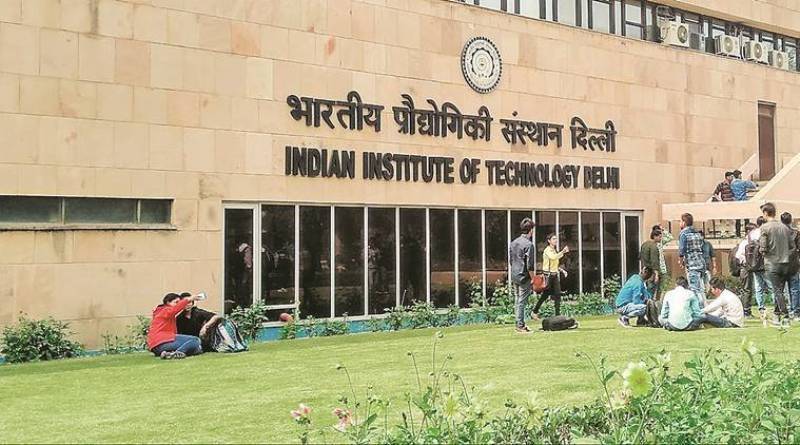
A new paper for Biomedical Engineering is introduced in Graduate Aptitude Test in Engineering (GATE) from the year 2020. It is likely to unify undergraduate syllabus of Biomedical Engineering among different universities. It has been done to aid stimulating the growth of product development and research in India.
Indian Institute of Technology (IIT), Delhi will conduct the examination on February 1, 2, 8 and 9, 2020. Applications for it will begin from September 3. Interested candidates can apply at the official website, gate.iitd.ac.in. The online application process will be closed on September 24, 2019.
What is the Syllabus of Biomedical Engineering IIT GATE 2020?
Section 1:
Engineering Mathematics
Linear Algebra: It includes Matrix algebra, systems of linear equations, Eigenvalues and Eigenvectors. Calculus: Mean value theorems, theorems of integral calculus, partial derivatives, maxima and minima, multiple integrals, Fourier series, vector identities, line, surface and volume integrals, Stokes, Gauss and Green’s theorems.
Differential equations: First order equation (linear and nonlinear), higher order linear differential equations with constant coefficients, method of variation of parameters, Cauchy’s and Euler’s equations, initial and boundary value problems, solution of partial differential equations: variable separable method. Analysis of complex variables: Analytic functions, Cauchy’s integral theorem and integral formula, Taylor’s and Laurent’s series, residue theorem, solution of integrals.
Probability and Statistics: Sampling theorems, conditional probability, mean, median, mode and standard deviation, random variables, discrete and continuous distributions: normal, Poisson and binomial distributions. Tests of Significance, statistical power analysis, and sample size estimation, Regression and correlation analysis.
Numerical Methods: Matrix inversion, solutions of nonlinear algebraic equations, iterative methods for solving differential equations, numerical integration.
Section 2:
Electrical Circuits
Voltage and current sources: it comprises of independent, dependent, ideal and practical; v-i relationships of resistor, inductor, mutual inductor and capacitor; transient analysis of RLC circuits with dc excitation. Kirchoff’s laws, mesh and nodal analysis, superposition, Thevenin, Norton, maximum power transfer and reciprocity theorems. Peak-, average- and rms values of ac quantities; apparent-, active- and reactive powers; phasor analysis, impedance and admittance; series and parallel resonance, locus diagrams, realization of basic filters with R, L and Celements.
Section 3:
Signals and Systems
Continuous and Discrete Signal and Systems: It includes Periodic, aperiodic and impulse signals; Sampling theorem; Laplace, Fourier and z-transforms; transfer function, frequency response of first and second order linear time invariant systems, impulse response of systems; convolution, correlation. Discrete time system: impulse response, frequency response, pulse transfer function; DFT; basics of IIR and FIR filters.
Section 4:
Analog and Digital Electronics
Characteristics and applications of diode, zenerdiode, BJT and MOSFET; small signal analysis of transistor circuits, feedback amplifiers. Characteristics of operational amplifiers; applications of opamps: difference amplifier, adder, subtractor, integrator, differentiator, instrumentation amplifier, buffer. Combinational logic circuits, minimization of Boolean functions. IC families: TTL and CMOS.
Arithmetic circuits, comparators, schmitt trigger, multi-vibrators, sequential circuits, flipflops, shift registers, timers and counters; sample-and-hold circuit, multiplexer. Characteristics of ADC and DAC (resolution, quantization, significant bits, conversion/settling time); basics of number systems, microprocessor and microcontroller: applications, memory and input- output interfacing; elements of data acquisition systems.
Section 5:
Measurements and Control Systems
SI units, systematic and random errors in measurement, expression of uncertainty – accuracy and precision index, propagation of errors. PMMC, MI and dynamometer type instruments; dc potentiometer; bridges for measurement of R, L and C, Q-meter. Basics of control engineering – modeling system: transfer function and state-space model, stability analysis: time domain and frequency domain analysis.
Section 6:
Sensors and Bioinstrumentation
Types of Instruments: it includes Resistive-, capacitive-, inductive-, piezoelectric-, Hall Effect sensors and associated signal conditioning circuits; Optical sources and detectors: LED, Photo-diode, p-inandavalanchephotodiode (APD), light dependent resistor and their characteristics; basics of magnetic sensing; Interferometer: applications in metrology; basics of fiber optic sensing. Basics of LASERs.
Origin, nature, and types of Biosignals, Principles of sensing physiological parameters, types of transducers and their characteristics, Electrodes for bioelectric signals, Bioelectric signals and their characteristics. Biopotential Amplifiers, Noiseandarte facts and their management, Electrical Isolation (optical and electrical) and Safety of Biomedical Instruments. Generation, Acquisition, and signal conditioning and analysis of biosignals: ECG, EMG, EEG, EOG, Blood ERG, PCG, GSR. Principles of measuring blood pressure, Core temperature, volume & flow in arteries, veins and tissues – Lung volumes, respiration and cardiacrate.
Section 7:
Human Anatomy and Physiology
Basic elements of human body- i.e. muscloskeletal system, respiratory system, circulatory system, excretory system, endocrine system, nervous system, digestive, nervous, immune, integumentary, and reproductive systems, Basics of cell and molecular biology.
Section 8:
Biomechanics
Engineering Mechanics: such as Free-body diagrams and equilibrium; trusses and frames; virtual work; kinematics and dynamics of particles and of rigid bodies in plane motion; impulse and momentum (linear and angular) and energy formulations, collisions. Hard Tissues: Definition of Stress and Strain; Deformation Mechanics. Bone structure & composition mechanical properties of bone, cortical and cancellous bones, viscoelastic properties, Maxwell & Voight models – anisotropy, Fatigue Analysis
Soft Tissues: Structure, functions, material properties and modeling of Soft Tissues: Cartilage, Tendon, Ligament, Muscle – Hodgkin-Huxley Model.
Human Joints and Movements: Skeletal joints, forces and stresses in human joints, types of joint, biomechanical analysis joints, parameterisation and analysis in Gait
Bio fluid mechanics: Flow properties of blood, Dynamics of fluid flow in the intact human cardiovascular system – modeling and experimental approaches, Pulse wave velocities in arteries, Measurement/Estimation of In-vivo elasticity of blood vessels.
Section 9:
Medical Imaging Systems
It includes basic physics and Instrumentation of medical images in X-Ray, Ultrasound, CT, MRI, PET, FMRI, SPECT, and their characteristics.
Section 10:
Bio-materials
They include basic properties of bio-materials, biocompatibility, bioactivity, biodegradable materials, Fundamentals of implants and medical devices, drug delivery carriers, scaffolds for tissue engineering.
Candidates Must Note:
The exam will now be held on 25 subjects such as Biomedical Engineering, Aerospace Engineering, Agricultural Engineering, Architecture and Planning, Biotechnology, Civil Engineering, Chemical Engineering, Instrumentation Engineering, Mathematics and Mechanical Engineering and other subjects.
















